Sony PlayStation 5
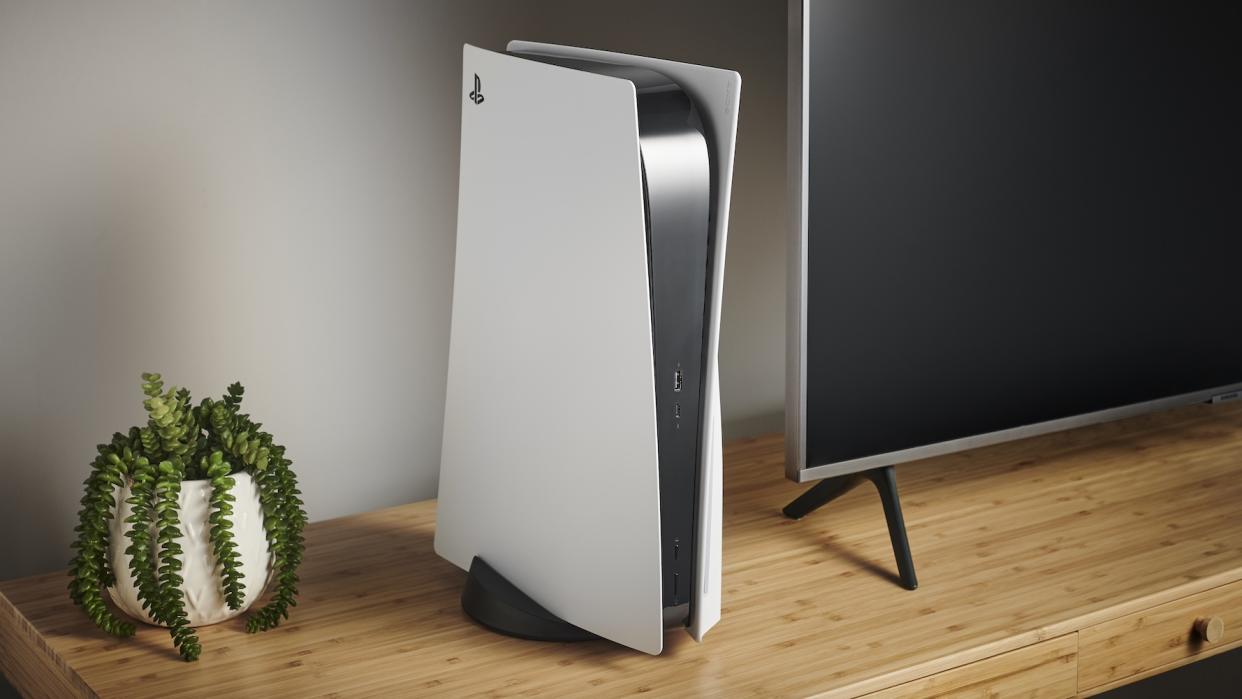
The Sony PlayStation 5 launched in 2020 – seven years after its predecessor appeared and proceeded to utterly dominate its competition. But this time, the PS5 faced an uphill battle to convince everyone that it’s a necessary purchase.
It isn’t a gateway to gaming in a new resolution in the way that previous console generations were, and you don’t even need to buy one to play the latest games – there are almost no titles in its entire catalogue that can’t also be played on PS4.
But the PS5 has some unexpected tricks up its sleeve that make it feel like a proper generational upgrade and, ultimately, give it a leg up over the Xbox Series X.
Price
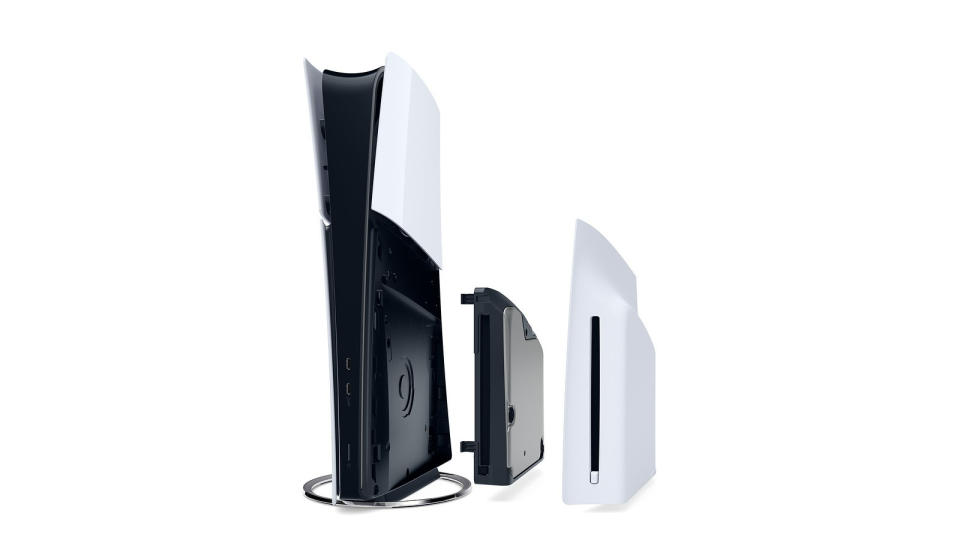
The PS5 launched at £450 ($500, AU$750), the same launch price of Microsoft's Xbox Series X. This was joined by a more affordable PS5 Digital Edition (£360, $400, AU$600) which is identical to the standard PS5 in terms of performance and specs but lacks an optical disc drive. Microsoft’s disc-less next-gen console, the Xbox Series S (£249, $300, AU$500), costs significantly less than the PS5 Digital Edition, but is also downgraded in a number of ways so (by design) isn’t in the same league.
Both PS5 models have since had a price hike to £480 / $500 / AU$799 for the Physical Edition and £390 / $450 / AU$769 for the Digital Edition. Both have been redesigned too – at the end of 2023, the PS5 Slim was announced (technical name, CFI-2000). This is 30 per cent smaller and 24 per cent or 18 per cent lighter than the original PS5, depending if you opt for the version that includes the disc drive. It has more storage (1TB compared to 825GB for the original PS5) and swaps the front USB-A port for a more modern USB-C. You can also buy the disc drive separately – it costs £100 / $80 / AU$159, meaning you'll save £10 / $30 / AU$129 if you decide to get the disc-drive included model from the get-go. And there's an optional vertical stand, to show off how slim your new PS5 is. That costs £25 / $30 / AU$49.
Initially, the PS5 was plagued with stock issues back in November 2020 when it was released; however, this has since been resolved, with Sony amping up production greatly, meaning you should be able to purchase a PS5 with relative ease. Once all stock of the original PS5 variants is sold out, the PS5 Slim will be the only one available.
PS5 Slim vs PS5: what's the difference?
Build
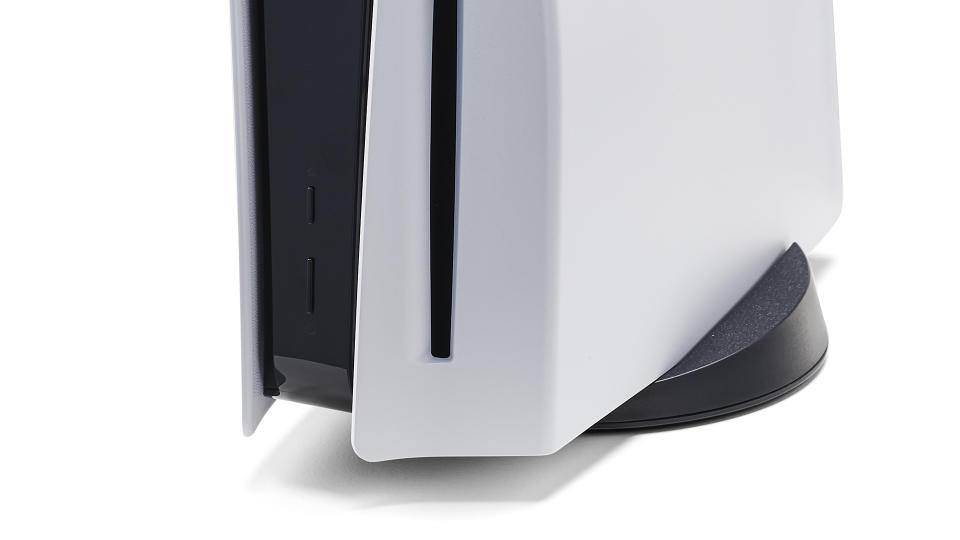
The PS5 is absolutely huge. So huge, it makes the Xbox Series X – a very large console in its own right – look decidedly compact. Standing vertically, Sony’s console is 9cm taller and 11cm deeper than its Microsoft rival, and is big enough to cause issues for those with limited space in their equipment racks, particularly as you have to allow space for it to stay cool. (Though the Slim model is a lot smaller – see previous section.)
Like the Xbox Series X, the PS5 uses a single, unusually large fan (by console standards) to keep itself cool, which it does very quietly indeed. Unlike the Xbox Series X, it’s not completely inaudible in a silent room, but the consistent whirr is quiet enough to be drowned out by any sound coming from your TV or sound system.
With both consoles, the disc drive is noisier than the fan, particularly when playing a 4K Blu-ray. Here, though, we peg the PS5 at about 5dB quieter than the Xbox. That’s enough to make a difference and, while neither will intrude on your movie soundtrack, you are more likely to notice the Xbox in the quieter moments. It isn’t an issue with games, as even those bought on disc run primarily from the consoles’ built-in storage.
In terms of the PS5’s looks, we’ll leave you to make up your own mind. For every person who likes the way it’s styled, there seems to be at least one more who hates it. Perhaps this Marmite-like reaction is precisely what Sony was going for.
You can at least position it vertically rather than horizontally if that better suits your furniture and/or tastes, but swapping orientation involves unscrewing and repositioning the included pedestal stand: the console’s curves mean it won’t simply lie flat.
PS5 tech specs
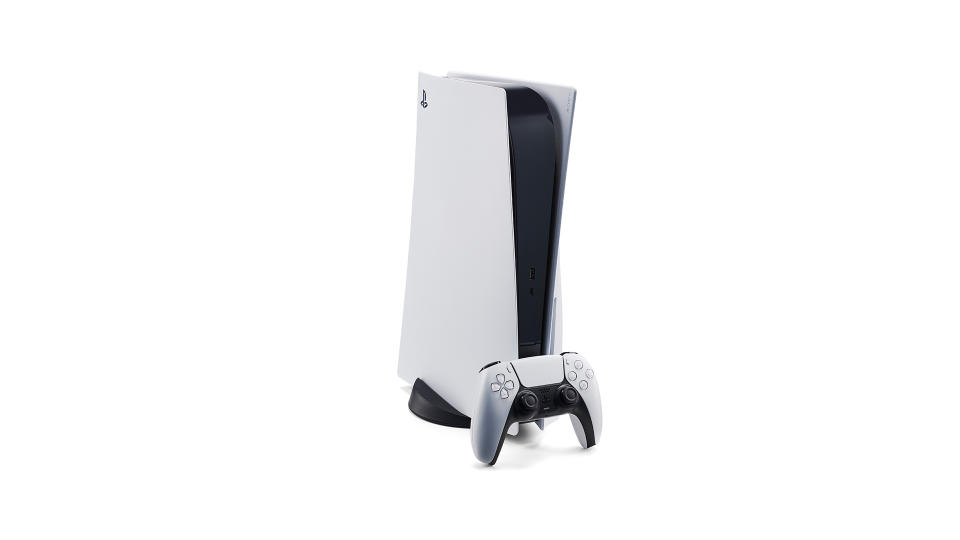
Maximum resolution 4K
Maximum frame rate 120fps
Storage 825GB SSD
Outputs HDMI 2.1, 3.5mm headphone jack (on controller), USB (Type-A) x3, USB-C
Audio formats Dolby Digital, Dolby Atmos (Blu-ray only), DTS
HDR formats HDR10
Dimensions (hwd) 39 x 10 x 26cm (Slim: 36 x 9.6 x 22cm)
Weight 4.5kg (Slim: 3.2kg)
The PS5’s controller is the first real indication that Sony has opted to go beyond sheer processing power and aimed for a more holistic upgrade encompassing the way games feel and sound.
The new DualSense is a massive step up from its DualShock predecessor, and is packed with technology that helps immerse you in the games you play in new and inventive ways.
It’s all down to a series of motors that provide haptic feedback as well as resistance in the triggers. Pull down the left trigger to aim down the sites of a gun in Call Of Duty: Black Ops Cold War and the resistance under your finger varies, depending on the weight of the weapon. Pull the right trigger and the first bit of movement is light before you get to a sort of bite point that you need to click through to fire the gun.
Switch to Astro’s Playroom and you can feel raindrops as they land on his umbrella. It sounds gimmicky, but it’s testament to the quality of the engineering and the way it’s seamlessly integrated with the visuals and sound that the opposite is true.
The DualSense is bigger than the PS4’s DualShock 4 and quite weighty, too. The general shape and button layout is the same, though, and if you’re comfortable gaming on a PS4, you should have no problem here.
One other addition that’s fairly easy to miss (and even dismiss) is the DualSense’s integrated microphone, which has its own mute button above. This allows you to plug any pair of standard wired headphones into the bottom of the controller while still being able to communicate with friends in online games.
That's a particularly big deal because any standard headphones plugged into the DualSense can take advantage of the console’s bespoke 3D audio technology. The controller’s integrated microphone makes voices sound tinny, but clarity is decent as long as there isn’t much background noise. All told, this is an excellent solution that allows everyone to experience 3D audio.
Features
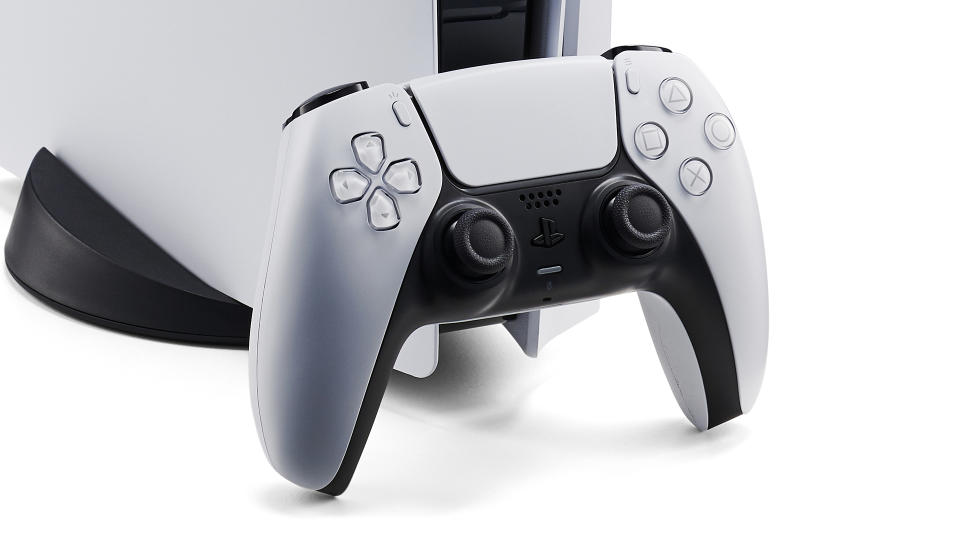
In the battle of the spec sheets, the PS5 appears to lose out against the Xbox Series X. Both have 8-core CPUs from AMD, but the Xbox’s are clocked at 3.8GHz while the PS5’s are 3.5GHz. Both consoles also use AMD graphics processors, with the Xbox’s providing 12 teraflops of power to the PS5’s 10.28 teraflops.
Both consoles use SSDs (solid-state drives) rather than mechanical hard disk drives, with Microsoft offering 1TB of storage to the PS5’s 825GB (expandable via USB hard drive) – though the PS5 Slim has 1TB. But the way Sony has designed and integrated the PS5’s storage makes it so fast (more than twice as fast as that of the Series X, in fact) that it essentially boosts overall console performance.
Neither console uses that power to deliver 8K. As with the Xbox Series X, the PS5 has no 8K output option within its menus. Instead, 4K at 60Hz is the performance target, with 120Hz available via some games, often at the cost of resolution and/or certain graphical features.
One such graphical feature that this new console generation brings with it is ray tracing, which massively improves lighting, shadows and reflections. This has the potential to transform almost everything you see on screen, making games look vastly more realistic.
Like the Xbox Series X, the PS5 allows you to prioritise graphical quality or performance for many games. Delve into the Game Presets section of the settings and you can choose between Resolution Mode and Performance Mode. While any 4K HDR TV will be capable of supporting Resolution Mode, even when it includes ray tracing, if a game has a 120Hz Performance Mode, you'll need a compatible 120Hz capable TV with HDMI 2.1. Check out our list of the best gaming TVs for guidance.
ALLM (Auto Low Latency Mode) and VRR (Variable Refresh Rate) weren't initially supported at launch, but both have been added in subsequent software updates.
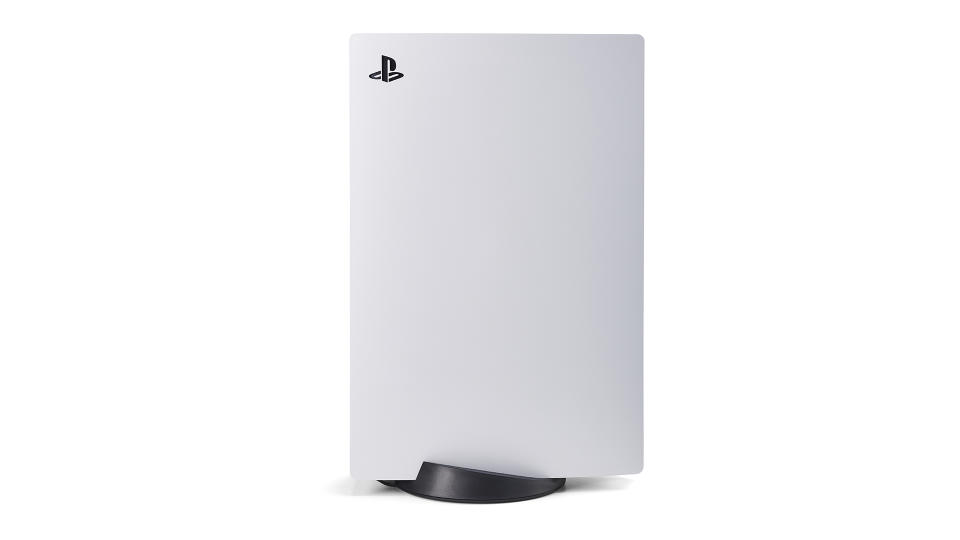
For many people, a console needs to be an all-round entertainment device rather than a pure games machine. The PS5 obliges with a selection of streaming apps and a 4K Blu-ray player, although there are some flaws and missteps here.
One of the big flaws with the PS5 at launch was the lack of system-wide Dolby Atmos support. But that all changed in September 2023 with the roll-out of Atmos on the console, for gaming as well as movies. Here's how to enable it. The PS5 still doesn't support Dolby Vision.
The Disc Player app is unique in that it’s able to override the system’s frame rate and dynamic range settings. If you play a standard Blu-ray movie, for example, it will be output at 24fps and in SDR, just as it should. At launch, every streaming app would output content in line with the console’s main settings, so 24fps SDR content would be upconverted to 60fps and HDR, which could result in some judder and exaggerated colours.
Thankfully, the HDR output issue has been solved to some degree thanks to an April 2021 firmware update for the console. It allows you to go into the PS5 HDR settings and select "HDR: On When Supported". Now, HDR/SDR is matched for games and apps, depending on how the content is flagged.
In terms of actual app selection, the PS5 is roughly on a par with the Xbox Series X. Netflix, Amazon Prime Video, Disney+ and Apple TV are all here in 4K HDR. UK owners also get Now, TNT Sports and TV from Sky (essentially Sky Go for the big screen), but of the terrestrial catch-up services, only All 4 was included at launch. BBC iPlayer was only added in 2021. ITV Hub is still not officially available, though you can access it through TV from Sky.
It's also worth mentioning a couple of the accessories available for the PS5. The most important one from our point of view is the PlayStation Pulse 3D Wireless Headset. These wireless headphones have been designed specifically with the PS5 in mind and we're pleased to report they work extremely well with the console. They also sound great for the money too.
Another accessory you might want to consider is the PS5 media remote, which allows you to take control of the console and navigate your way around like you would a set-top box. It's a handy alternative if you don't want to use the controller, although our spare change would first go towards the Pulse 3D headset.
Performance
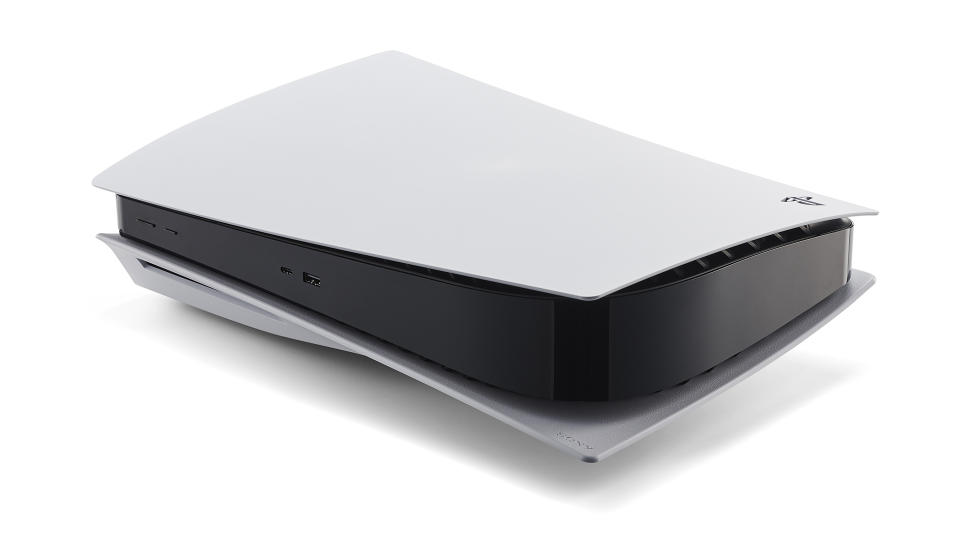
As soon as you turn the PS5 on, it’s clear that this is a next-generation console. While the Xbox Series X bizarrely seems determined to convince you that it’s just like the Xbox One you owned before it, the PS5 screams newness from its sultry logos and 4K HDR user interface, to its new home screen with game ‘cards’ that fill your screen and speakers when highlighted. It’s a fresh, super-stylish presentation, but familiar enough to ensure that existing PS4 gamers will quickly find their way about. The clear icons, logical layout and snappy operation aid its usability, too.
The PS5 has an even better next-gen trick up its sleeve, in the form of Astro’s Playroom, which is pre-installed on the console. Not only is this a great platforming game in its own right, it also serves as an ingenious introduction to the DualSense controller’s many features, plus the super-polished, super-smooth 4K/60Hz presentation.
Once we’ve had enough cutesy robot fun, we move on to Call Of Duty: Black Ops Cold War, which is a great showcase for both next-gen consoles and one of the best PS5 games you can buy. By default, the game runs in 4K at a consistent 60 frames per second, but you have the option to either further enhance the visuals by enabling ray tracing, or enhance the performance by enabling 120Hz.
It's worth noting here that the PS5 content library has grown since the launch of the console, with many first-party games such as God of War: Ragnarock, Final Fantasy XVI and Horizon Forbidden West all offering excellent next-generation gaming experiences. There has also been a fair few third-party titles like Call of Duty Modern Warfare II and Hogwarts Legacy which take advantage of the PS5's additional computing power to offer 120Hz gameplay and stunning 4K graphics, however still not in combination with each other.
Each option has its merits: competitive gamers will go for the responsive 120Hz mode (if their TV supports it), while those who prioritise cinematic spectacle will want to enable the lovely ray tracing feature. In fact, there’s an argument that 120Hz is of most use in multiplayer, while ray tracing makes sense for the campaign, so it’s a bit of a shame that you have to quit the game in order to activate and deactivate Performance Mode.
Switching between Call Of Duty on PS5 and Xbox Series X, it’s difficult to spot any differences in either the presentation or the performance. There may be some on the spec sheet, but if one is a better performer than the other, it’s not obvious here.
We play the Sony-exclusive Spider-Man: Miles Morales and are again given the option of playing in a ray tracing-enabled mode (Fidelity Mode) or Performance Mode. Fidelity Mode runs at just 30 frames per second, but looks glorious. This is a pseudo-sequel to the Spider-Man game that came out on the PS4 in 2018, and is set in the same city.
On the PS5, though, it is packed with extra details, people and traffic, and the ray tracing adds stunning reflections to all of its windows, vehicles and puddles. This has a transformative effect on the scale of the presentation. The city simply looks bigger, busier and more realistic and Miles Morales feels like the strongest advert yet for next-gen.
Taking a break from gaming, the PS5 serves as a capable streamer and disc-player, its limitations notwithstanding. Jack Ryan streamed from Amazon Prime Video is punchy, dynamic and naturally balanced in its colours. The Apple TV 4K produces a slightly more sophisticated and nuanced delivery, but the PS5 is certainly a match for the Xbox Series X.
Switching to the 4K Blu-ray of Blade Runner 2049, we’re impressed by the depth, solidity and three-dimensionality of the PS5’s delivery. That has benefits across the whole picture, particularly in terms of drama, dynamism and colours. However, the PS5 isn’t a match for even the most affordable dedicated 4K Blu-ray players when it comes to subtlety of shading and stability in motion. If you’re serious about disc-based movies, a standalone player is still the way to go.
PS5 Slim: price, specs, where to buy and everything you need to know
Sound

Spinning up the bombing-run scene of Unbroken via Blu-ray, it turns out that the PS5 can do a very good job of Dolby Atmos soundtracks when given the chance. It doesn’t quite have the crispness or dynamic punch of a dedicated player such as the Sony UBP-X700, but the console produces a muscular, room-filling sound with good clarity and well-placed sound effects.
Even without delving into Atmos audio, the PS5’s bespoke 3D audio system is really good. We test it with a pair of B&O BeoPlay H2 on-ears and the extravagant Grado GS3000e over-ears, each plugged into the DualSense controller, plus the official, (not to mention excellent) PlayStation Pulse 3D Wireless Headset. In every case, we find that the so-called Tempest Engine delivers open, spacious and atmospheric sound with good placement of effects and a convincing sense of three-dimensionality.
In the CIA safehouse at the start of Call Of Duty, the 3D audio gives a real sense of the cavernous nature of the place, the distance of each character as they speak, and the echo as their voice reacts to the interior walls of the warehouse. You get none of this when listening in simple stereo.
There’s a slight synthetic note to the presentation that isn’t there when listening through proper speakers and, try as it might, the processing can’t quite place effects directly in front or behind you. Still, if you don’t already have a surround-sound package, the PS5’s 3D audio is an excellent solution that makes use of the headphones you may already own.
Verdict
While the PS5 and Xbox Series X are both undeniably next-generation consoles, the PS5 seems to take the edge for us as it feels more ambitious than the Xbox. It feels fresh and new, has an innovative controller, features bespoke 3D audio tech that anyone with a pair of simple wired headphones can take advantage of, and a built-in game that introduces you to all these cool new things in charming style. None of this can be said of the new Xbox.
Its credentials as an all-in-one entertainment device are rather dented by its complete lack of Dolby Vision, although at least Dolby Atmos has now arrived.
Besides, the majority of people will buy a next-gen console for next-gen gaming, and it's the PS5 that delivers this most effectively – not in terms of resolution and frame rates, which are no higher here than from the Xbox – but in terms of new, game-changing tech and a dazzling user experience.
MORE:
How to get the best picture and sound from your PlayStation 5
Read our PlayStation Pulse 3D Wireless Headset review
Our pick of the best PS5 deals
